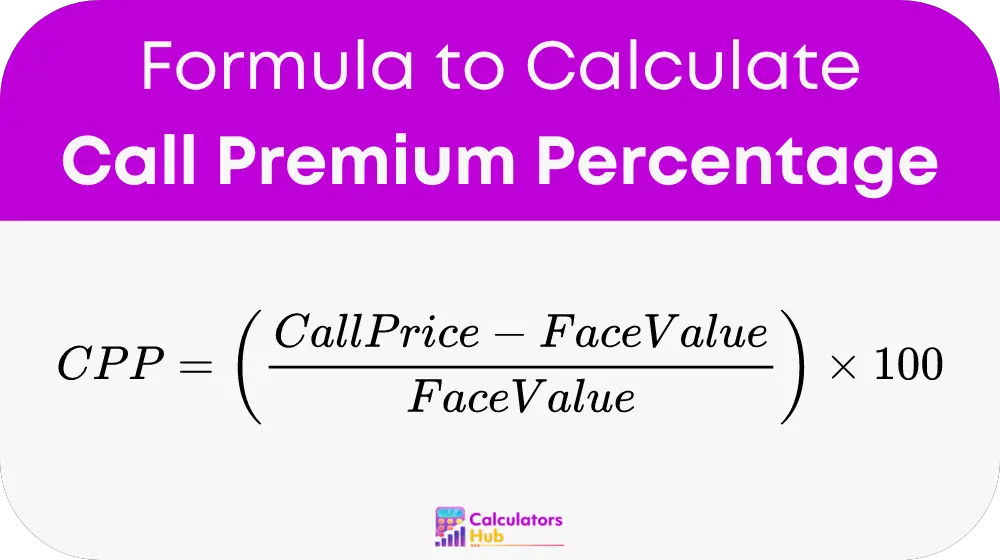The Call Premium Percentage Calculator is a financial tool that helps bondholders and issuers determine the premium a bond issuer would need to pay to repurchase or "call" a bond before its maturity date. A bond is often issued with a callable feature, meaning the issuer has the right to repurchase it before maturity, usually at a price higher than the bond's face value. The call premium is the amount the issuer must pay above the bond's face value to repurchase it.
For investors, understanding the call premium percentage is important because it directly affects the yield and total return on investment if a bond is called early. For bond issuers, knowing the call premium helps in managing refinancing costs.
Formula of Call Premium Percentage Calculator
The formula used to calculate the Call Premium Percentage is:

Where:
- Call Price is the price at which the issuer can repurchase the bond before its maturity.
- Face Value is the nominal or original value of the bond, representing the principal amount.
Explanation of Terms
- Call Price: This is the price at which a bond issuer can buy back the bond from investors before its maturity. The call price is typically higher than the face value to compensate investors for the early repurchase.
- Face Value: Also known as par value, this is the amount the bondholder receives at maturity. It represents the original principal amount of the bond when issued.
- Call Premium Percentage: This percentage indicates how much more the issuer will pay above the face value of the bond to call it. It is a measure of the additional cost the issuer incurs for repurchasing the bond early.
Helpful Table for Common Terms
The table below provides definitions for common terms used when calculating the call premium percentage. These terms are essential for understanding how the bond call premium works.
| Term | Definition |
|---|---|
| Call Price | The price at which the issuer repurchases the bond early |
| Face Value | The original or nominal value of the bond |
| Call Premium Percentage | The percentage premium paid over the face value for early repurchase |
| Callable Bond | A bond that can be repurchased by the issuer before maturity |
This table helps investors and issuers understand the different factors involved in calculating the call premium percentage.
Example of Call Premium Percentage Calculator
Let’s walk through an example to demonstrate how the Call Premium Percentage Calculator works.
Problem: An investor holds a bond with a face value of $1,000. The issuer decides to call the bond early at a call price of $1,050. Calculate the call premium percentage.
Solution:
- Call Price: $1,050
- Face Value: $1,000
- Apply the formula:Call Premium Percentage = [(Call Price - Face Value) / Face Value] × 100Call Premium Percentage = [(1,050 - 1,000) / 1,000] × 100Call Premium Percentage = [50 / 1,000] × 100 = 5%
Thus, the call premium percentage is 5%, meaning the bond issuer will pay 5% more than the bond's face value to repurchase it early.
Most Common FAQs
Understanding the call premium percentage is essential for bond investors because it affects the overall yield and return on a bond if it is called before maturity. A higher call premium compensates investors for the loss of future interest payments, while a lower premium could reduce the investment's attractiveness.
For the bond issuer, the call premium represents the additional cost of repurchasing the bond before its maturity. Issuers often call bonds when interest rates drop, allowing them to refinance at lower rates. The call premium ensures that investors are compensated for the early termination of the bond agreement.
No, not all bonds are callable. Only bonds issued with a callable feature can be repurchased by the issuer before maturity. Callable bonds typically offer higher yields to compensate for the risk of being called early, while non-callable bonds provide more certainty to investors.